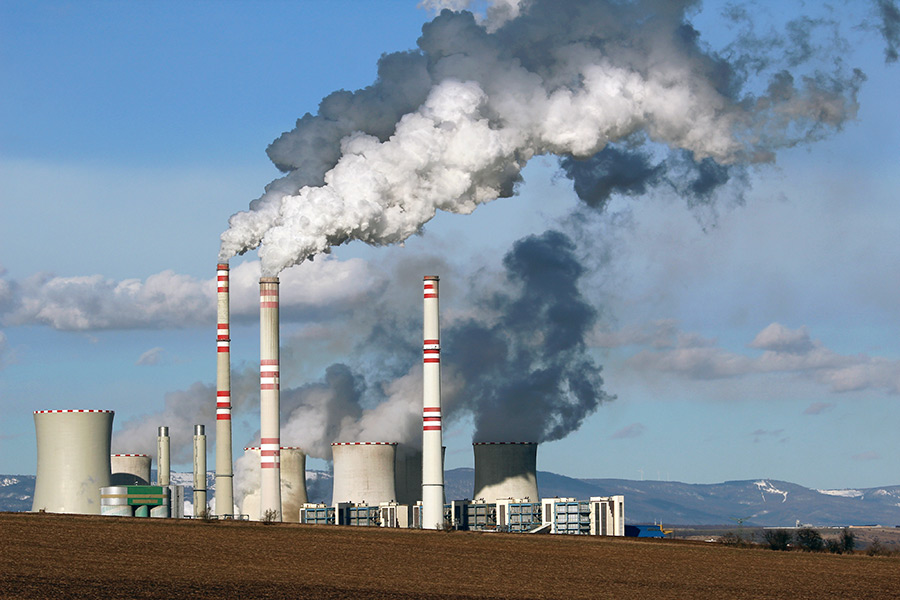As the debate rages over the federal government imposing sweeping regulations over states, Montana is developing a strategy that could reduce climate pollution without closing coal plants while improving energy efficiency and increasing other forms of cleaner renewable resources.
In a letter to Montanans last week, Gov. Steve Bullock outlined a list of options that could diversify and clean the state’s energy landscape.
The potential changes, detailed in a preliminary report from the Montana Department of Environmental Quality, include scenarios such as investing in new renewable electricity infrastructure to harness wind, sun and water resources and improving the efficiency of Montana’s nine coal-fired plants, including PPL Montana’s Colstrip Steam Electric Station, which is the second largest coal plant in the West.
Along with adding jobs to the state’s economy, the new approach could help protect Montana’s environment from the impacts of climate change, Bullock said.
“We are fortunate to have some of the nation’s largest coal reserves, highest rated wind potential and a legacy of hydroelectric power,” Bullock, a Democrat, said. “Like so many Montanans, I also expect that we will protect our environment, outdoor heritage, communities and farmers and ranchers. I am very concerned about the impacts of climate change on our state, our economy and our environment. Montanans see the effects on our air and water, agriculture and outdoor heritage. We all worry about the impacts on our kids and their kids.”
Across the country, state officials are crafting similar clean-energy strategies in response to the Obama administration’s watershed — and controversial — move to reduce greenhouse gas pollution and address climate change. The Environmental Protection Agency this summer issued a draft plan to regulate carbon pollution from existing power plants, which are the primary source of climate pollution.
After assessing each state, the EPA gave unique targets for carbon reduction that must be met by 2030. The average nationwide reduction goal is 30 percent and Montana’s target is 21 percent. States have until 2017 to create emission reduction plans and an additional year if they partner with other states.
Similar to the subject of climate change, the EPA’s bold ultimatum has been met with heavy scrutiny and opposition.
William Kovacs, senior vice president of environment, technology and regulatory affairs with the U.S. Chamber of Commerce, warned attendees at last week’s Kalispell Chamber of Commerce luncheon of a worsening “regulation nation.”
In the last 40 years, the nation has ceded an increasing amount of power to the EPA and other federal agencies through legislation such as the Clean Air Act and Endangered Species Act.
Kovacs said these agencies are being controlled by litigious environmental groups through “sue and settle” methods that change national policy and wipe out state’s individual authority.
“The Clean Air Act is taking the EPA’s power out of the federal level and putting it over state authority,” Kovacs said.
Kovacs described the Obama administration’s Climate Action Plan as a potentially milestone regulation that is both unreasonable and attempting to expand federal authority at an unprecedented size and scope. He said the U.S. Chamber of Commerce has a team of lawyers preparing to fight against the EPA’s proposed reductions in court.
Supporters of the reduction plan say the target levels can be easily met without significantly shaking up the state’s energy sector while addressing the worsening impacts of climate change.
Bullock said the DEQ would hold public meetings in the coming months to discuss the proposed alternatives for complying with the EPA’s rule.
The state will submit comments to the agency on the draft rule by the deadline of Dec. 1, he said. The EPA is expected to issue a final rule by June 2016.
“There are many opinions about the EPA rules, both for and against. I’m less interested in the rhetorical fights and more interested in knowing what the proposed rules could mean for Montanans if implemented,” Bullock said.
Bullock said he believes the state can develop its own strategy that strengthens Montana’s energy sector and bolsters the economy while protecting the state’s quality of life and outdoors.
The state is already on track to enhance renewable energy sources by following a 2005 state law that required 15 percent of electricity be from renewable sources by 2015.
None of the five scenarios in the DEQ report require the closure of existing power sources. Even the partial capture and sequestration of carbon emissions from the Colstrip mine, which accounts for half of the state’s emissions, could play a very significant role in any compliance strategy, Bullock said.
The DEQ study does acknowledge the potential for emissions reductions in other states having a negative impact on mining in Montana. The state exports 75 percent of its coal, according to the industry group Count On Coal Montana.
The governor predicted ratepayers would likely have minimal exposure to higher rates from the expansion of renewables as part of any compliance strategy.
